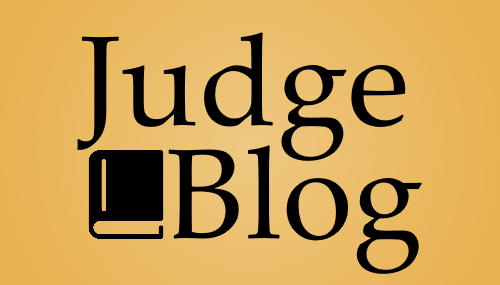
L2P(Learn to Play) 프로그램에 오신 것을 환영합니다! (파트 2)
L2P 역할은 Flesh and Blood 커뮤니티에서 중요한 자리를 맡게 됩니다. 이 역할의 저지는 새로운 플레이어에게 게임을 소개하는 최전선에 서게 되며, L2P 인증을 받으려는 후보자로서 해야 할 일은 단순히 규칙을 설명하는 데 그치지 않습니다. 지속적인 관계를 형성하고, 새로운 플레이어가 새로운 취미를 즐길 수 있도록 돕고, Flesh and Blood의 성장과 재미를 확장할 수 있는 환경을 조성하는 역할을 담당하게 됩니다.
이 가이드에서는 L2P 인증을 위해 배워야 하는 핵심 기술을 설명합니다. 이러한 기술을 습득하면 게임을 잘 설명할 수 있는 앰버서더가 될 수 있을 것입니다. 각 파트는 대인관계 기술, 지도 기술, 협력 기술 등 다양한 기술을 대상으로 합니다. 플레이어와 직접 소통할 때나 게임의 기술적 내용을 설명할 때, 팀에서 협력할 때도 누구에게나 친절하고 전문적인 대응을 하며 즐거운 경험을 제공하는 방법을 학습합니다.
파트 2: 지도 기술
이 단원에서는 게임의 기술적 측면을 효과적으로 전달하는 능력과, 플레이어가 Flesh and Blood의 여정을 계속하기 위해 필요한 리소스를 제공하는 기술에 초점을 맞추고 있습니다. 지도 기술을 마스터한다는 것은 게임을 세세한 부분까지 이해하고 명확하게 가르치는 능력뿐 아니라, 신규 플레이어를 가치 있는 도구, 커뮤니티, 온라인 리소스로 안내하는 능력을 의미합니다. 이는 중요한 개념을 설명하는 방법을 알고, 플레이어에게 덱 구축 방법을 소개할 수 있으며, 플레이어가 지역에서 게임을 할 수 있는 기회를 찾는 데 도움을 줄 수 있는 것을 포함합니다.
1. 용어의 이해
게임을 가르칠 때는 Flesh and Blood의 공식 용어를 일관되게 사용하는 것이 중요합니다. 플레이어가 다른 게임을 알고 있는 경우, 유사한 개념(마나나 에너지 등)을 예로 들어 설명하는 것은 자연스러운 일이지만, Flesh and Blood의 개념을 소개할 때는 항상 공식 용어를 사용해 주세요. 예를 들어, 다음과 같은 경우가 있습니다. '마나' 대신 '리소스'라고 말해 주세요. 'Exile' 대신 'Banish'이라고 말해 주세요. 정확한 용어를 사용함으로써 플레이어가 게임에 친숙해지고, 커뮤니티와 연결되며, 소통과 이해를 깊게 하기 위한 적절한 언어를 습득할 수 있습니다.
2. 커뮤니티 리소스에 대한 지식
L2P 가이드로서, 여러분에게 요구되는 역할 중 하나는 신규 플레이어가 게임을 계속 플레이하거나 기술을 향상시키기 위해 필요한 리소스에 쉽게 접근할 수 있도록 지원하는 것입니다. 이상적으로는, 플레이어가 부스를 떠난 후 이벤트를 찾는 방법, 다른 플레이어와 만날 수 있는 방법, 게임의 규칙이나 전략에 대해 더 배우는 방법을 알고 있는 상태가 되어야 합니다.
가장 중요한 지원 중 하나는 GEM 시스템입니다. 플레이어가 계정을 생성하고 이벤트에 등록하며, 진행 상황을 알 수 있게 해주는 주요 플랫폼입니다. 또한 플레이어가 가장 가까운 로컬 게임 스토어(LGS)를 찾아 이벤트에 참여할 수 있도록 도와주는 방법도 알아두셔야 합니다. LGS에서는 Armory, Skirmish와 프리 릴리즈 등의 이벤트에 참여할 수 있습니다..
커뮤니티 리소스를 공유할 때의 팁
- 항상 플레이어가 Gem 계정이 있는지 확인하세요. 만약 없다면, 계정을 만드는 방법을 안내해 주세요.
- 이벤트에 LSS가 참여하는 경우, 지원용 QR 코드가 제공할 수 있습니다. 이 QR 코드를 사용할 수 있는 경우 반드시 활용해 주시기 바랍니다. 플레이어가 자신의 진행 상황을 더욱 쉽게 확인할 수 있습니다.
- LGS(로컬 게임 스토어)를 찾는 방법을 공유하세요. Flesh and Blood 웹사이트의 매장 및 이벤트 찾기 도구 등을 활용해 플레이어들이 플레이할 수 있는 곳을 안내해 주세요.
- 플레이어들에게 온라인 리소스인 L2P 가이드, 전략 기사, 동영상 등을 소개하여 게임 플레이를 향상시키는 데 도움을 줄 수 있도록 안내해 주세요.
- 플레이어의 관심사에 맞는 긍정적이고 유용하며 재미있는 콘텐츠를 제공하는 해당 언어의 콘텐츠 크리에이터를 공유할 수 있도록 준비해 주세요.
- 온라인 커뮤니티에 가입하는 것을 추천합니다. 예를 들어 지역 디스코드 서버나 페이스북 그룹 등에서 질문을 하고 다른 플레이어들과 소통할 수 있습니다. Judges of Rathe 디스코드 서버는 규칙 관련 질문을 할 수 있는 훌륭한 장소입니다!
3. Deckbuilding Knowledge
One of the most fulfilling parts of Flesh and Blood is building a deck. It allows players to customize their strategy and experiment with different heroes and card combinations. While new players may not be ready to jump into competitive deckbuilding right away, it’s important to help them understand how to start their journey of fun and satisfaction with the game.
After a successful experience, your player will have a tremendous number of questions. These concepts form the backbone of important concepts to share with your player after gameplay, but you should always be led by their questions.
Important Deckbuilding Concepts:
- What equipment is, and how that affects gameplay. A player from the First Strike decks should have this exposure.
- The concept of arcane damage, and the differences in how that interacts with your hand’s resources and your equipment suite. A player from the First Strike decks should have this exposure.
- The breadth of the class system, and the diversity of playstyles that it supports.
- The nature of the talent system, and how it provides variation atop the class system.
- The constructed formats of the game, blitz and classic constructed, and how equipment cards join with deck cards to create a card pool.
- The limited formats of the game, sealed and draft.
- The game’s additional formats, like commoner, UPF, and Living Legend
- The non-rotating nature of the cardpool, and the Living Legend point system
- The levels of competitive play, from armory and skirmish, to ProQuest and Road to Nationals, and beyond to the Tier 3+ events.
These concepts are intertwined; there’s no single correct way to explain them all at one time. Here are a few guidelines for how to navigate the post-gameplay experience with a player.
Tips for Teaching Deckbuilding:
- Use the player’s experiences and preferences to pick example classes and talents, describing some popular play patterns including win conditions, pitch and block preferences, and perhaps mention some powerful cards.
- Use simple examples, like First Strike decks, to show how heroes and their cards create synergy.
- Encourage players to experiment with different combinations, but remind them that practice and experience will help them refine their deck-building skills. Emphasize how open ended deck building is and how diverse top finishes are, at even the highest stake events.
- Mention there is no rotation in the game and how a player’s collection keeps relevance. Explain the cool concept of Living Legends and the fact that every player in the world can influence the fate of their hero through events organized locally.
- Use First Strike decks, Blitz deck collections, and Armory decks, to demonstrate how the low-cost products support different player goals (e.g. small group fun vs. competitive preparation), and what are the strong points of each. This is especially effective if the player indicates they don’t enjoy deckbuilding!
- If a player is struggling to describe their own tastes and preferences with deckbuilding, you can use your own experience to illuminate what has excited you about different classes, heroes, and formats.
In Part 3, we’ll dive into collaboration skills. This section will cover how to communicate effectively with both players and fellow judges, how to mentor others, and how to contribute to an environment where everyone can learn and grow together. Keep reading!


Just passed the L2P exam and then went and watched the official L2P interactive on FABTCG.com
I noticed in the scenario it purely refers to resource as “energy”. This contradicts the policy here of using the term “resource”. Was not sure of a better place to point this or other suggestions out.
Just passed the L2P exam and then went and watched the official L2P interactive on FABTCG.com
I noticed in the scenario it purely refers to resource as “energy”. This contradicts the policy here of using the term “resource”. Was not sure of a better place to point this or other suggestions out.